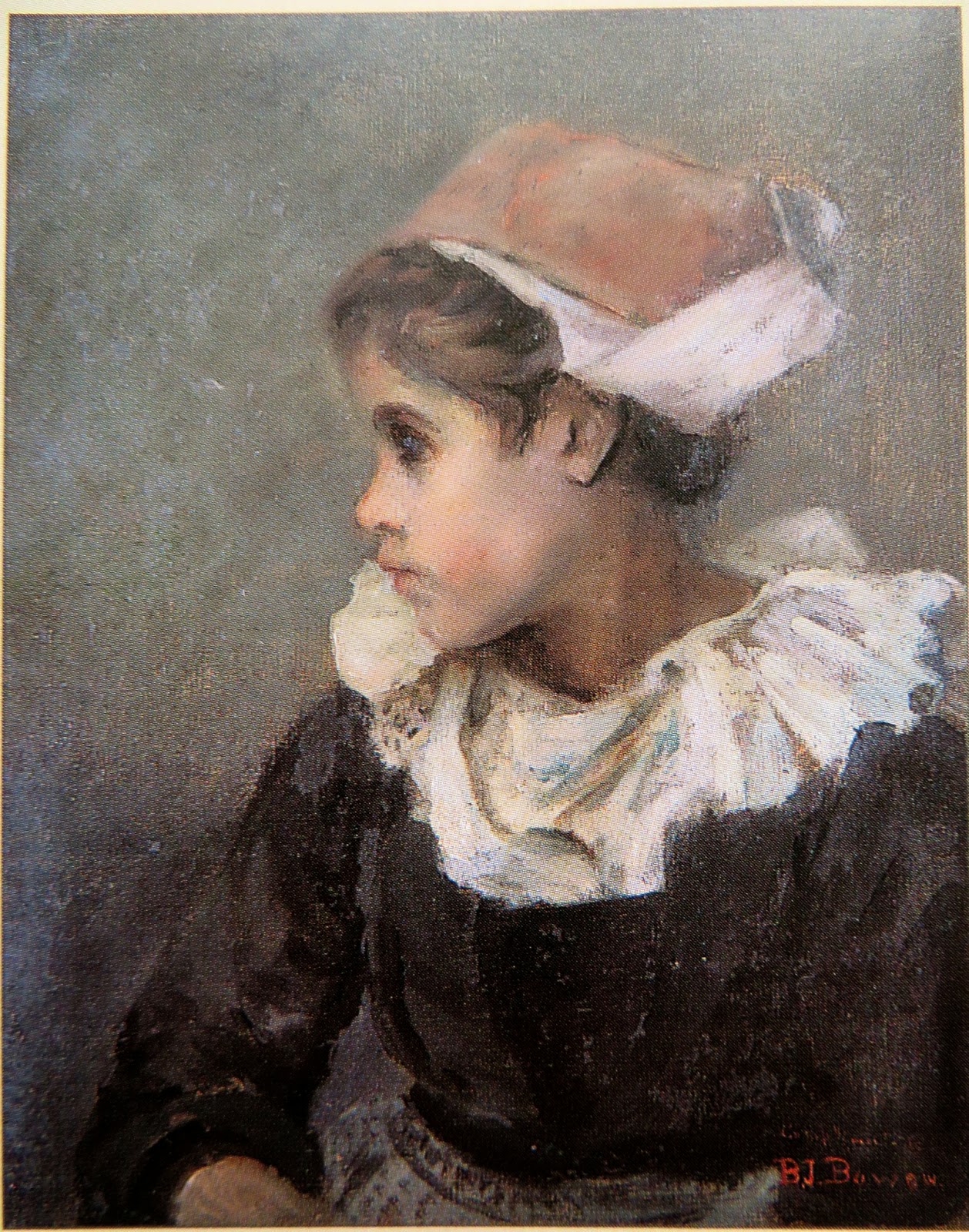Traditional
costumes had some fascination for artists, also for those working in the
Bretagne for a taste of basic life, so
Armand Seguin with bretonne (1895), „one of Seguin’s most sympathetic
portraits, the girl is not a „type“ but rather has the features and wistful
expression of a believable young woman“ (Caroline Boyle-Turner, The prints of
the Pont-Aven School).
Gauguins
Studie Breton girls beim Tanz (1888)
The
Boston based Benjamin J. Bowen (1859-1930)
et
Mathurin Méheut (1882-1958), jeune femme de Sein (1920)
So we are aware of these special days, like le Festival Interceltique von Lorient, le festival des filets bleus (http://www.festivaldesfiletsbleus.fr/).
Ma question was il y a une difference between les enfants vor 100 Jahren et heute?
In this Plougastel-Daoulas group de filettes les girls sont fiers de montrer their Kostüme
But this seems moins clair avec le family Foto
The kids at least show qu'il existe une sorte de vie besides the presentation. Ceci est également with this filette
Ähnlich wie diese filette at the Lorient interceltique 2012
Starting d'un dessin, a 2-Platten-Druck was designed
The contour plate can be printed in 2 colours
The colour plate can be inked avec 3 bleus différents before the face Farbe is added
Un peu d'ombrage can be added to improve den Ausdruck
Compared to the Aoi Matsuri, where up to 12 layers of kimono, weighing 30 kg in total, have to be carried, die Belastung is minimal. Voir l'image du festival "Hollyhook" from Jeremy Tan (Jinx studio):
Rate, ce qui se passe dans the mind with kids intégrés in such rituals – certainly beyond the scope of these costumes. Reminds me on this Sri Lanka girl June 8 at the Berlin Karneval der Kulturen


















Keine Kommentare:
Kommentar veröffentlichen